PM Modi to lay foundation stone of Noida International Airport on November 25
Radhika Bansal
25 Nov 2021
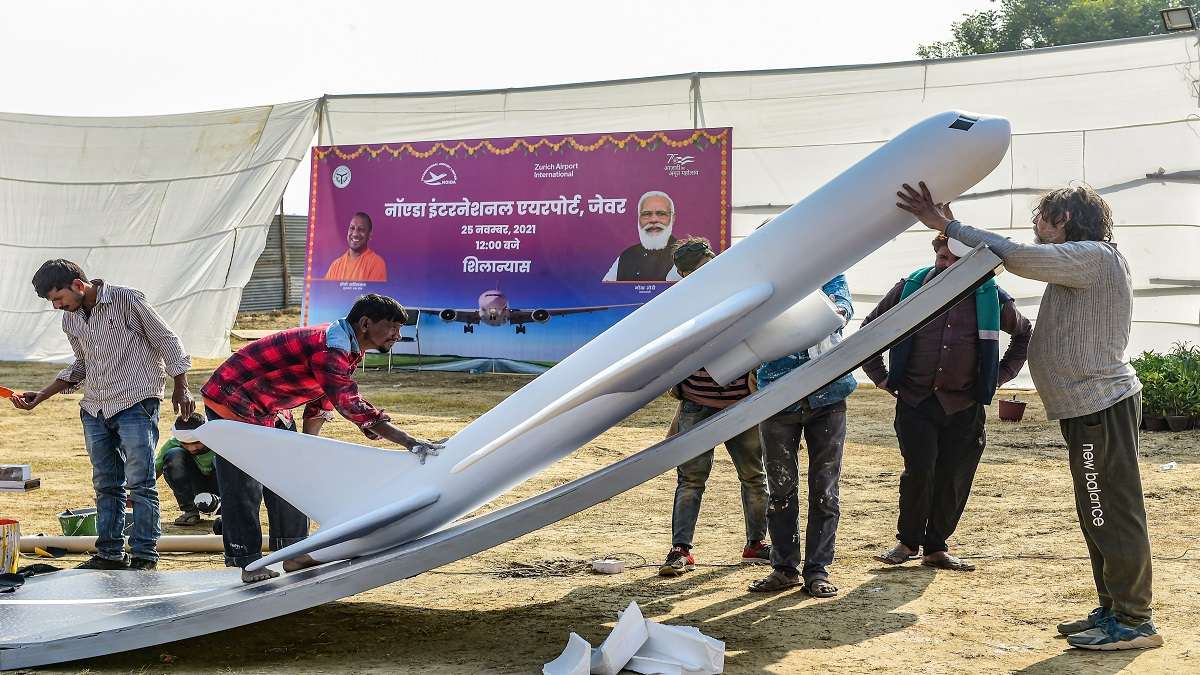
Prime Minister Narendra Modi will lay the foundation stone of the Noida International Airport (NIA) in Jewar, Gautam Buddha Nagar, Uttar Pradesh on Thursday, November 25 at 1 PM. The development of the first phase of the airport is being done at a cost of over INR 10,050 crore.
The airport is spread over more than 1300 hectares of land. The completed first phase of the airport will have a capacity to serve around 1.2 crore passengers a year and the work on it is scheduled to be completed by 2024.
Taking to Twitter, the prime minister had said that the project will boost commerce, connectivity and tourism.
https://twitter.com/narendramodi/status/1463536335419940870
"Tomorrow, 25th November is a major day for India's and Uttar Pradesh's strides in infra creation. At 1 PM, the foundation stone of the Noida International Airport will be laid. This project will significantly boost commerce, connectivity and tourism," the PM had tweeted on Wednesday, November 24.
According to Prime Minister's Office (PMO), Uttar Pradesh will become the only state in India to have five international airports.
The development of the airport is in line with the vision of the prime minister towards boosting connectivity and creating a future-ready aviation sector, it said.
"A special focus of this grand vision has been on the state of Uttar Pradesh that is witnessing the development of multiple new international airports including the recently inaugurated Kushinagar airport and the under-construction international airport at Ayodhya," it said.
This airport will be the second international airport to come up in Delhi NCR. It will help decongest the Indira Gandhi International (IGI) Airport.
As per PMO, the airport is strategically located and will serve the people of cities including Delhi, Noida, Ghaziabad, Aligarh, Agra, Faridabad and neighbouring areas.
The airport will be the logistics gateway of northern India. Due to its scale and capacity, the airport will be a game-changer for Uttar Pradesh. It will unleash the potential of Uttar Pradesh to the world, and help establish the state on the global logistics map, a release said.
It further said that for the first time, an airport in India has been conceptualised with an integrated multi-modal cargo hub, with a focus on reducing the total cost and time for logistics.
Work in progress for the inauguration (Image Courtesy - The Quint)
"The dedicated cargo terminal will have a capacity of 20 lakh metric tonne, which will be expanded to 80 lakh metric tonnes. By facilitating the seamless movement of industrial products, the airport will play a crucial role in helping the region attract huge investments, boost rapid industrial growth, and enable them to reach local products to national and international markets. This will bring new opportunities for numerous enterprises, and also create tremendous employment opportunities," the statement added.
The Noida International Airport will be implemented in four phases and the work on the first phase is scheduled to be completed in 36 months, said Civil Aviation Secretary Rajiv Bansal.
"The traffic of 12 million passengers per year is expected in the first phase and by the completion of final phase i.e. between 2040-50, the capacity of Jewar airport will be to handle 70 million passengers per year," Mr Bansal said.
He also informed that the Uttar Pradesh government is spending INR 4,326 crore on the acquisition of land and rehabilitation and resettlement. Mr Bansal said that the Prime Minister is personally monitoring the project.
As per PMO, the airport will develop a Ground Transportation Centre that will feature a multimodal transit hub, housing metro and high-speed rail stations, taxi, bus services and private parking.
This will enable seamless connectivity of the airport with the road, rail, and metro. Noida and Delhi will be connected to the airport through hassle-free metro service. All major nearby roads and highways like the Yamuna Expressway, Western Peripheral Expressway, Eastern Peripheral Expressway, Delhi-Mumbai Expressway and others will be connected to the airport.
The airport will also be linked to the planned Delhi-Varanasi High-Speed Rail, enabling the journey between Delhi and the airport in only 21 minutes.
The airport will also house a state-of-art Maintenance, Repair and Overhauling (MRO) Service. The design of the airport is focused on low operating costs and seamless and fast transfer processes for passengers.
The airport is introducing a swing aircraft stand concept, providing flexibility for airlines to operate an aircraft for both domestic and international flights from the same contact stand, without having to re-position the aircraft. This will ensure quick and efficient aircraft turnarounds at the airport while ensuring a smooth and seamless passenger transfer process. It will be India's first net-zero emissions airport. It has earmarked dedicated land to be developed as a forest park using trees from the project site. NIA will preserve all native species and be nature positive throughout the development of the airport.
Civil Aviation Minister Jyotiraditya Scindia said that almost $2 billion worth of investments have already come in for Jewar and the Centre hopes that about INR 60,000 crore of investments and production coupled with 1 lakh employment opportunities from Jewar.
This will also be India’s first net-zero emissions airport and has earmarked dedicated land to be developed as a forest park using trees from the project site. NIA will preserve all native species and be nature positive throughout the development of the airport.
On Tuesday, Chief Minister Yogi Adityanath came to the Jewar site to review preparations, ahead of PM Modi’s visit for the foundation stone laying ceremony of the airport.
The CM said the state is working on airports in areas where people could not have “imagined” earlier. He said the airport will bring 1 lakh jobs, and that many other projects like Film City, Electronic Park are coming up in the region.
“For many years, there have been discussions on the possibility of an airport in this region. But due to lack of political will, it could not materialise. I am thankful for the vision of the Prime Minister because of which the airport is being built. The government focused on development activities and this will be a monumental project for the public in West UP,” he said.
Noida Airport project is being funded on a debt-equity ratio of 65:35. Zurich Airport International AG (ZAIA), a fully owned subsidiary of Flughafen Zurich AG, is the main shareholder of YIAPL and is injecting INR 2,005 crores as equity into developing the airport.
The groundwork for the first phase regarding land acquisition and rehabilitation of the affected families has been completed.
Read next
Airbus Luxe ACH160 now has an autopilot system that will take over in case of rapid descent
Prashant-prabhakar
25 Nov 2021
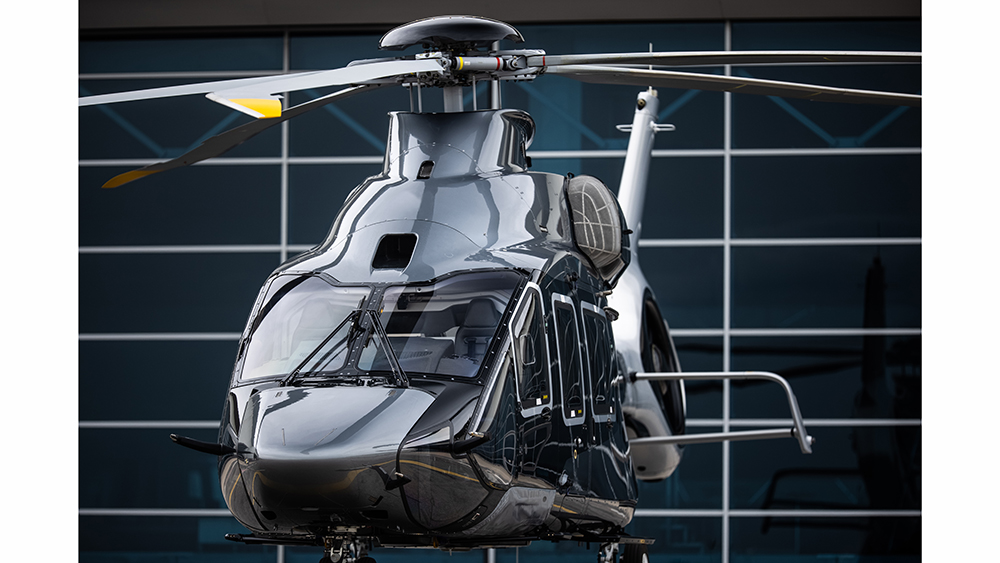
Airbus
Losing lift and stalling is the last thing anyone would want to encounter when flying. Although helicopters don't necessarily stall the way airplanes do, when they do, it can be hard to recover from.
You really wouldn't have to worry if you're flying in an Airbus ACH160 though. The innovative model ACH160 is a part of the H series, which has an autopilot system that would take over in rapid descent.
Apparently, the autopilot is designed to kick-off while in recovery mode, which would arrest the rapid plummet, thus bringing the chopper back to stable flight.
This is the latest of a new generation designed from the passenger’s point of viewsays test pilot, Olivier Gensse, who has been with the H160, the standard version of the ACH160 since the program’s inception.
How and when is the autopilot activated?
A vortex ring state free fall is a condition where the rate of descent of the copter increases rapidly. Gensse simulated a similar condition and demonstrated how pushing a button on the control stick activated the auto-pilot, kicking the system into recovery mode.
He further simulated an out-of-control flight in brownout conditions, resembling limited pilot visibility.
Tech and specifications
The chopper comes with enhanced safety features and sets a new standard for passenger comfort.With as many as 68 different patents for a customer step change, the copter also features the Airbus-developed Helionix avionics suite for reduced pilot workload, the canted Fenestron® for greater useful load and a flat attitude in flight, and sound-reducing Blue Edge™ rotor blades for quieter operations.
H160 Interiors | Airbus
Helicopter accidents often involve human error, especially if avionics are complicated. We designed the Helionix 3 system to be intuitive and simple, displaying critical information as needed. It’s about reducing the workload for the pilot without a hundred buttons on the displayGensse says
Further enhancing the safety is the integration of the first-ever computerised rotorcraft flight manual (C-RFM), providing the crew with essential information about the aircraft’s performance by the conditions of the day, the optional equipment, and the desired flight profile.
The ACH160 also has automated takeoff and a collision-avoidance system, both of which signify “a lot of new technology” incorporated into the design.according to Frédéric Lemos, chief executive of ACH.
Additionally, they also come equipped with the world’s first-ever ground helipad assisted take-off procedure.
https://www.youtube.com/watch?v=SzV6WZZeg0U
Ground Helipad Assisted Take-Off | Airbus | Youtube
The H160 also includes a tail fin camera, Sea State 6 emergency floatation system and windows that exceed EASA Type IV emergency egress size requirements.
COVER : Adrien Daste | Airbus
Read next
Government is making every effort to complete Air India disinvestment process by year end
Radhika Bansal
25 Nov 2021
The government is making all efforts to complete the disinvestment process of national carrier Air India by the end of December, according to a senior official.
Tata group firm Talace Pvt Ltd has emerged as the winning bidder for loss-making Air India.
On October 25, the government signed the share purchase agreement with Tata Sons for the sale of the airline for INR 18,000 crore. The amount includes payment of INR 2,700 crore in cash and takes over INR 15,300 crore of the carrier's debt.
On Wednesday, November 24, Civil Aviation Secretary Rajiv Bansal said all efforts are being made to complete the disinvestment process of Air India by the end of December. Bansal is also the Chairman and Managing Director of the national carrier.
Along with Air India, Tatas will acquire low-cost carrier Air India Express and Air India's 50% stake in equal joint venture AISATS.
Air India has been incurring a monthly loss of more than INR 600 crore, he noted.
The airline has 43 wide-body planes, including 27 Boeing 787s.
On October 20, Prime Minister Narendra Modi said the decision on Air India will give new energy to the country's aviation sector.
As of August 31, Air India had a total debt of INR 61,562 crore. Of the total amount, Talace will take over INR 15,300 crore, and the remaining INR 46,262 crore will be transferred to AIAHL.
Despite its precarious finances, Air India controls more than 4,400 domestic and 1,800 international landing and parking slots at domestic airports, and 900 slots overseas.
Currently, Air India has a fleet of 117 wide-body and narrow-body aircraft and Air India Express Ltd. has 24 narrow-body aircraft.
Besides, non-core assets of Air India, including land and building, valued at INR 14,718 crore, are also being transferred to AIAHL. Further, liabilities of INR 15,834 crore towards dues to operational creditors, like those for fuel purchases, as of August 31 would be transferred to AIAHL.
In 2019, the government set up a special purpose vehicle -- Air India Assets Holding Ltd (AIAHL) -- for holding debt and non-core assets of the Air India group.
Read next
International flight operations are expected to resume soon - MoCA Secretary
Radhika Bansal
24 Nov 2021
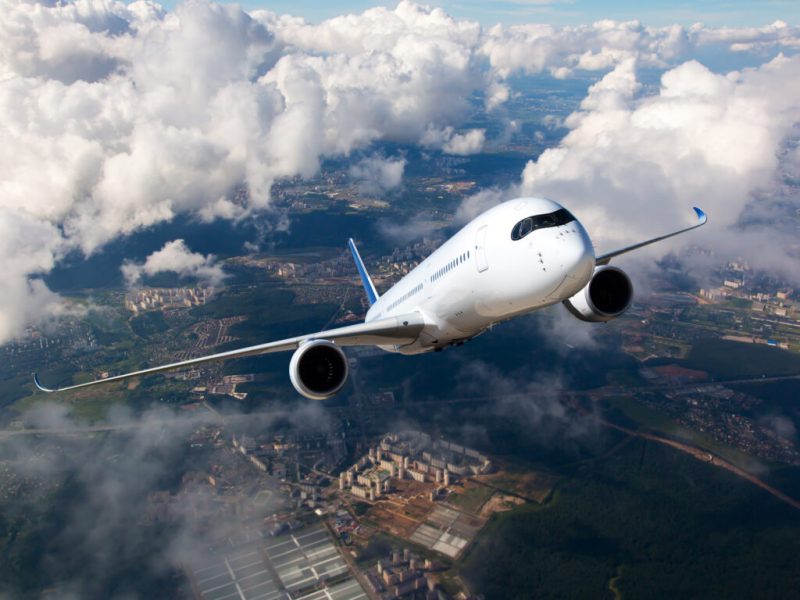
International passenger flight services are expected to be normalised "very soon" and possibly by the end of this year, Civil Aviation Secretary Rajiv Bansal said on Wednesday, November 24.
Scheduled international passenger flights to and from India remain suspended since March 2020 amid the coronavirus pandemic.
The suspension has been extended till November 30. The normalisation of international flights is expected "very soon" and by the end of this year, Bansal said.
(Image Courtesy - ANI - Twitter)
Bansal's statement comes around a month after domestic flight operators in the country were allowed to operate at their pre-pandemic capacities.
Currently, India has air bubble arrangements with more than 25 countries for operating international flights. Under an air bubble arrangement between two countries, international passenger flights can be operated by their respective carriers into each other's territories subject to certain conditions.
Last week, Civil Aviation Minister Jyotiraditya Scindia said the government was evaluating the process for normalising international operations and asserted that it wants to return to normalcy while keeping in mind the coronavirus pandemic situation in certain parts of the world.
(Image Courtesy - Business Traveller)
"I am all for regaining our space in the civil aviation arena in the world and making a hub in India and for more wide-body aircraft. We will get there but bear with me and trust me, I am on your side. We will work together but in a safe environment," he had said.
Airlines were initially allowed to operate a maximum of 33% of all pre-Covid routes. That cap was gradually increased to 80% by December last year. Occupancy rates were reduced to 50% in June this year after the country was hit by a second wave of infections and deaths.
“We are evaluating the process. We are coming back to normalcy. First, we allowed 100% passenger capacity in our domestic flights and now we allowed in-flight meals in those flights. the authorities must vary of the pandemic. We want to resume international operations but in a safe environment. Despite vaccinations, countries like Russia and parts of Europe are fighting the fourth wave of the pandemic. Hence, we cannot let our guard down. Let’s not erase our memories so soon, getting infected with the covid-19 virus is the worst thing possible."Jyotiraditya Scindia, Union Minister for Civil Aviation
As prep for re-opening international passenger air travel, the government last month also said it would resume granting tourist visas; this was restarted on November 15.
Grant of tourist visas had also been suspended in the wake of the pandemic.
Read next
Singapore Airlines and its subsidiary Scoot will gradually operate flights from Singapore to 10 Indian cities from November 29 onwards, a statement said on Tuesday, November 23.
Civil Aviation Authority of Singapore (CAAS) had on Sunday, November 21 announced that Singapore and India have reached an agreement to resume commercial passenger flights between the two countries from November 29.
Air travel to Singapore is currently happening on the vaccinated travel lane (VTL) and a non-vaccinated travel lane.
https://twitter.com/SingaporeAir/status/1463136458089254919
VTL allows quarantine free travel to Singapore for fully vaccinated travellers.
Singapore Airlines in its statement said on Tuesday that it will launch daily direct VTL services from Chennai, Delhi, and Mumbai on November 29, subject to regulatory approvals.
In addition, Singapore Airlines said it will operate non-VTL direct flights connecting Singapore with Bengaluru, Ahmedabad and Kochi from November 30.
The full-service carrier will also start non-VTL direct flights on the Singapore-Hyderabad route from December 1 onward.
"Singapore Airlines may operate both VTL flights and non-VTL flights on the same routes, so it is important for customers to select their flights carefully," it stated.
Singapore Airlines' low-cost subsidiary Scoot will start non-VTL services on the Singapore-Hyderabad route and Singapore-Tiruchirapalli route from November 30 and December 2, respectively.
Scoot will also operate non-VTL direct flights on the Singapore-Amritsar route by its Boeing 787 Dreamliners from January 31 next year, it said.
Travellers on a VTL flight entering Singapore will be required two COVID-19 tests -- one within two days of flight departure and one on-arrival test at the Singapore airport.
(Image Courtesy - Zee Business)
Pre-COVID, Scoot operated six-passenger services to India – Amritsar, Coimbatore, Hyderabad, Tiruchirappalli, Trivandrum, and Visakhapatnam. Scoot is committed to resuming its other routes between Singapore and India soon, to support the safe and gradual resumption of international air travel, to reunite loved ones across borders and better support pent-up demand for both leisure and business travels.
The VTL passengers would not undergo any quarantine.
Singapore started the VTL mechanism on September 8 with two countries – Brunei and Germany. It now has VTL arrangements with 13 countries, including Australia, the UK and the US. VTLs for India, Finland, Indonesia, Malaysia and Sweden will become operational from November 29, and similar arrangements for Qatar, Saudi Arabia and the United Arab Emirates (UAE) will begin from December 6.
Scoot Tigerair Pte. Ltd., trading as Scoot, is a low-cost long-haul subsidiary airline of Singapore Airlines (SIA), via Tiger Airways Holding. Established by Singapore Airlines in 2011, Scoot commenced operations in June 2012 to Sydney and Gold Coast.
SIA utilised Scoot to leverage the rising challenge from LCCs in key markets. Scoot initially launched operations with four Boeing 777-200s in a two-class configuration and later switched its fleet to over 15 787-8/9 aircraft, all sourced through parent SIA.
Tiger Airways Holdings became a subsidiary of the Singapore Airlines Group in Dec-2014 after the airline group increased its stake in the company from 40% to 56%. Singapore Airlines acquired the remaining shares in Tiger Airways Holdings in March 2016 and established a new holding group for its LCC subsidiaries (Scoot and Tigerair) called Budget Aviation Holdings, with plans of merging Scoot into Tiger Airways Holdings.
Scoot and Tigerair completed the integration on 25-Jul-2017. The combined airline operates A320 and Boeing 787 aircraft under a common AOC, using the Scoot brand and TR flight code.
Read next
The Delhi airport will become a net-zero carbon emission facility by 2030, said its operator DIAL on Tuesday, November 23.
Achieving "carbon neutral" or "net-zero carbon emission" status refers to a policy of not increasing carbon emissions and of achieving carbon reduction through offsets, it stated in a release.
(Image Courtesy - The Guardian)
The announcement about the 2030 target was made by Videh Kumar Jaipuriar, CEO, of Delhi International Airport Limited (DIAL), through a video message on November 10 at the COP26 event in Glasgow.
"At Delhi Airport, we are on a strong environment progress journey and we are confident to becoming 'net zero carbon emission' airport by 2030, following the Airport Carbon Accreditation guidelines. Towards this direction, we have initiated various environmentally sustainable programmes, such as the introduction of TaxiBot and adoption of electric vehicles.While the airport is already utilising renewable energy programmes such as solar rooftop panels, it has also developed green infrastructure and multiple passenger connectivity networks. The airport also has a water and waste treatment plant, along with energy efficient lighting systems."Videh Kumar Jaipuriar, CEO, Delhi International Airport Limited (DIAL)
To add to these measures, the airport operator recently adopted electric vehicles and a TaxiBot, which is a semi-automatic robot that helps in taxiing an aircraft, without the aircraft having to be turned on, thereby reducing carbon emissions. TaxiBot was introduced in 2019, making Delhi airport the first one in the country to do so.
The airport said TaxiBot has resulted in a significant reduction in turbine fuel consumption for ground movement.
He added that the airport achieved a level 4+ accreditation last year after getting a “carbon neutral” status in 2016.
(Image Courtesy - Delhi Airport - Twitter)
Commercial aviation is responsible for about two to three per cent of the global carbon emissions. Swedish climate activist Greta Thunberg has given up flying to reduce her carbon footprint, boosting the "flight shame" movement in Europe and other parts of the world.
India is currently the world’s third-biggest emitter of greenhouse gases, after the United States and China. Speaking at the COP26 summit, Prime Minister Narendra Modi had announced that the country would make a one billion-tonne reduction in projected emissions from now until 2030. Modi also said India’s emissions intensity, or emissions per unit GDP, will be reduced by at least 45% by 2030 from the 2005 levels.


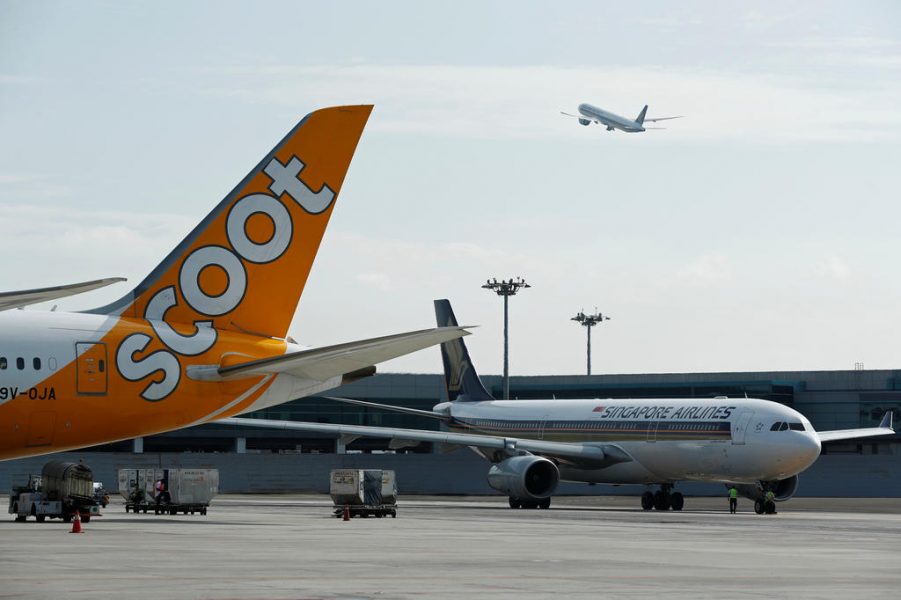
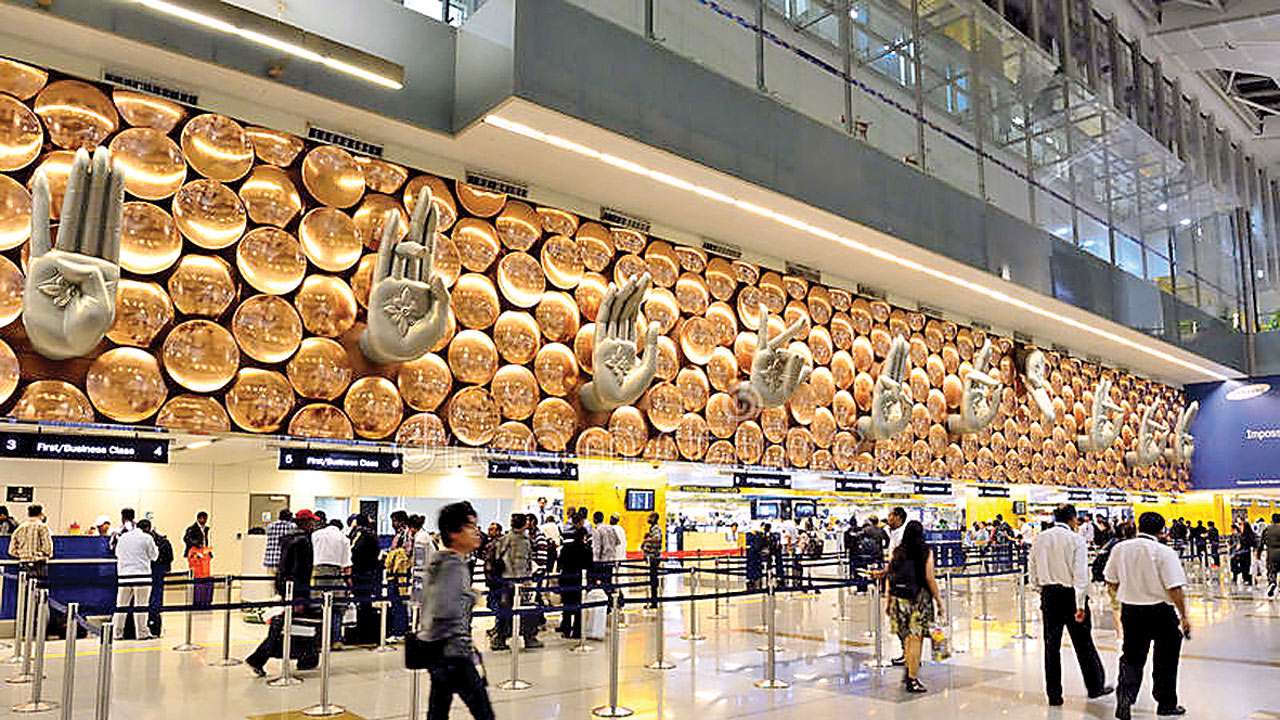
Comment